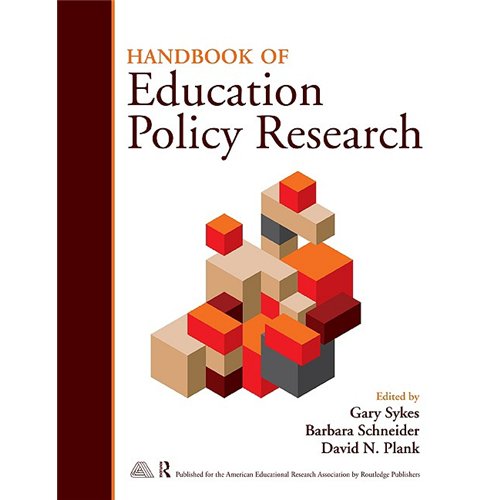Two leading educational reseachers provide an historical overview of debates about the most effective methods of literacy learning.

Once the standard for reading competence shifted to efficient comprehension following silent reading, as it did in the 1920s, assessment experts developed a new tool, the multiple-choice reading test, which was capable of monitoring growth and trends more efficiently; unlike oral reading measures, these silent multiple-choice measures could be administered to large groups of students, even entire schools, at once. …
Once wide-scale standardized assessment took hold, as it did in the 1920s, the standard for reading competence was set. It has, as a matter of policy, remained fundamentally unchanged and only occasionally challenged since that time, although … we pay a high price in terms of consequences for using multiple-choice test scores as our standard of progress. Also correlated with this change in the standard was a change in pedagogy. The highly synthetic (letters to words) alphabetic approach, which had prevailed since colonial times, was challenged by two decidedly analytic alternatives. The first, dubbed the words-to-letters approach, introduced, words in the very earliest stages and, for each word introduced, immediately asked children to decompose it into component letters. Words-to-letters is the obverse of the alphabetic, or letters-to-words, logic of the alphabetic approach. However, with the alphabetic approach, it shares the goal of ensuring that children learn the sound correspondences for each letter and the same set of underlying assumptions about the nature of teaching, learning, and reading. Today we would call it analytic (whole-to-part) phonics.
The second reform, dubbed words-to-reading, later came to be known as the look-say or whole word method of teaching reading. Here, no attempt was made to analyze words into letter-sounds until a sizeable corpus of words were learned as sight words. Contrary to popular opinion, which would have us believe that phonics was never taught in the look-say approach, some form of analytic phonics (a modified version of words-to-letters) usually kicked in after a corpus of a hundred or so sight words had been learned. It was different from a strict word-to-letters approach, though, because the strict requirement for decomposing each word into its component letters was dropped in favor of what might be called focused analysis. For example, a teacher might group several words that start with the letter f’(e.g., farm, fun, family, fine, and first) and ask students to note the similarity between the initial sounds and letters in each word. As it turned out, this approach (a combination of look-say with analytic phonics) persevered to become the “conventional wisdom” from 1930-1970. It was the basic premise in the infamous Dick and Jane series developed first by William Elson (Elson & Keck, 1911) and then Elson and William S. Gray (1936) for Scott Foresman’s Curriculum Foundation Series in the 1930s.
The remainder of reading curricular history in the 20th century can be aptly characterized by any one of the popular metaphors describing tensions among different camps in a profession—a struggle between competing goals, a war between opposing ideological forces, or a pendulum that swings back and forth between opposing curricular viewpoints. Even though the war metaphor is rhetorically appealing, we think the most appropriate metaphor is perpetual motion pendulum. The pendulum swing in reading entails several dimensions, but only one is clearly dominant, the focus of the curriculum in the early grades—Kindergarten through Grade 2. And the perennial question is, should our early reading curriculum emphasize cracking the code (the successors of the alphabetic approach), the cipher detailing how print maps onto sound, or constructing meaning in response to a text (the successors to the look-say approach)? … In general, code-emphasis approaches also emphasize acquiring an increasingly complex set of subskills (the assembly line metaphor fits), while meaning-emphasis approaches emphasize the continual quest for meaning at every age and stage and the reciprocal relationship between knowledge and comprehension—knowledge begets comprehension begets knowledge (the metaphor of a machine that is fully operational from the start but is able to perform those operations on increasingly sophisticated content fits). In the first metaphor, students get better by adding more components to their repertoires; in the second, by adding more potent fuel, in the form of more sophisticated world knowledge and experience in managing the metacognitive monitoring functions of reading, to the mix.
From the 1920s through the 1960s, the pendulum swung farther and farther to the meaning end of the pendulum’s arc … , only to be challenged, initially in the popular press by pundits such as Rudolph Flesch (1955), who was confident about the source of the problem (we had forsaken simple but enduring phonics rules in favor of this gibberish about meaning and whole words), and at the end of the 1960s by the revitalization of a host of code-emphasis curriculum programs. This brief return to phonics first, however, would be shortlived because it was almost immediately challenged by the paradigm shift that lay just around the corner in the 1970s. Then, after a two-decade period of dormancy during the late 1970s and 1980s, the back to phonics/basics was once again re-energized in the mid-1990s by a complex set of political forces.
Schoenfeld, Alan H. and P. David Pearson. 2009. “The Reading and Math Wars.” in Handbook of Education Policy Research, edited by G. Sykes, B. Schneider, and D. N. Plank. New York: Routledge. pp.561-563. || Amazon || WorldCat
